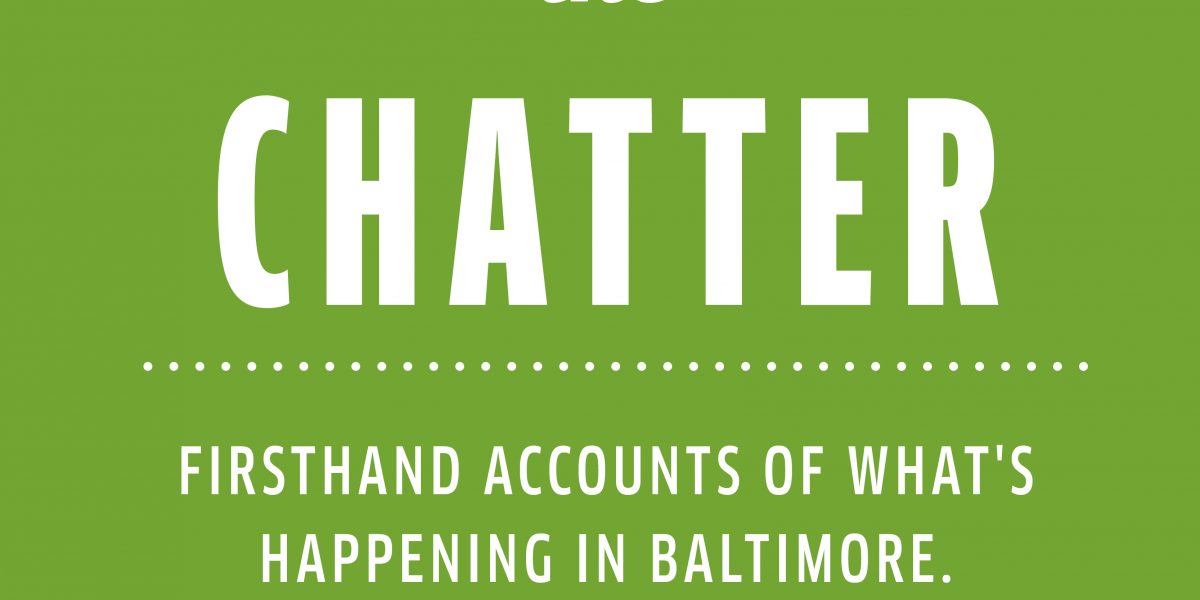News & Community
The Chatter
Firsthand Accounts of What's Happening in Baltimore
Time for Love
June 3, 2014
Foster Avenue
Standing against a wall amongst the nervous, young professional crowd at The Chasseur, a Canton neighborhood bar and restaurant, Uriah Moore, 31, grabs a drink, admittedly trying to relax. One of 28 participants—the guys mostly dressed in jeans and Polos or button-down shirts; the ladies in sun or sleeveless dresses on this warm evening—Moore is steadying himself for a Leukemia & Lymphoma Society charity speed-dating event.
“I just got out of a four-year relationship that I knew wasn’t going to work after four weeks,” Moore, a teacher, says.
For Natalie diFrancesco, The Chasseur’s general manager and tonight’s host, the cause is personal. “My mother died of leukemia when she was 38,” she says. “Her birthday just passed.”
Eventually, the women take their spots at tables spread throughout the restaurant’s intimate dining room and the men begin moving from one to the next as diFrancesco rings a bell, ending each brief round. It looks a bit like musical chairs, except each person “rates” each mini-date on a scorecard. Afterwards, those with matching “high marks” are re-introduced with the opportunity of exchanging contact information.
“McDreamy hasn’t walked through my door yet,” says Katie Shoemaker, a school psychologist, referencing actor Patrick Dempsey’s character on Grey’s Anatomy. “Oh, but I know this guy,” she whispers as her next date approaches. “I met him Saturday night,” she laughs. “Now this should be interesting.”
Going to Pot
June 7, 2014
Linthicum Heights
Inside a Westin BWI hotel conference room, would-be entrepreneurs, older than you might think, take copious notes as Brent Tageson discusses the finer points of his profession. Dressed in slacks and a golf shirt, Tageson could pass for a corporate CEO, but he is, in fact, a Northern California marijuana grower. Eight years ago, he was busted in a raid, but today he’s working for the Cannabis Career Institute, introducing others to a rapidly changing industry. “If you take all the moisture out,” he cautions, explaining proper “curing” techniques while gesturing to photos of large marijuana plants on the screen behind him, “all you have left is plant material. And what you want is the cannabis oil.”
The $300, all-day workshop comes on the heels of Maryland’s recent decriminalization of small amounts of marijuana and revision of the state’s medical marijuana initiative. After Tageson discusses cultivation, his partner, Aaron Silverman, addresses the retail side of the business as it’s currently playing out in California and Colorado. Some here are clearly already growers—“Sure, I’m interested in potentially opening a dispensary, but I do like to garden as a hobby,” laughs one gray-haired man—while others are attending for personal, medical, or purely entrepreneurial reasons.
“I was recently diagnosed with bladder cancer,” says another middle-aged man. “I’m an insurance agent.”
Kal Shah, a Hindu businessman, smiles when asked why he’s interested in pot. “Well, I’ve never smoked marijuana,” he admits. “But I’d consider opening a dispensary,” the good-natured Shah chuckles. “Why not? I don’t drink and I own several liquor stores, and I don’t eat meat and I own two Subway franchises.”
Wind and a Prayer
June 8, 2014
South Exeter Street
Filing out of morning Mass at St. Leo the Great Roman Catholic Church, led by Bishop Denis Madden, some 400 Little Italy parishioners gather outside for the traditional Feast of St. Anthony procession, keeping a 110-year-old promise to the medieval Franciscan friar.
As flames moved east during the Great Baltimore Fire of 1904, destroying more than 1,500 buildings in its wake, Italian immigrants were told to evacuate. “Sparks were coming into the neighborhood,” says Jerry Elliott, president of the St. Anthony’s Society of St. Leo’s. A number of worried faithful, however, went to the church and removed St. Anthony’s statue—the same one that remains in the church today—carrying it to the waterfront and praying that their homes and church be spared. “When the winds changed overnight, they decided to hold a festival every year in honor of St. Anthony,” explains Elliott, adding that although he’s Irish, he is “married to an Italian girl” with local roots.
After the procession, the statue is placed beneath a tent for prayers to the saint and donations to the poor. “I haven’t missed it since I arrived from Sicily in 1967,” says Anthony Staiti, 74, after pinning $5 on the statue and receiving a small St. Anthony medallion. “When I was sick as a child, my Sicilian mother prayed to St. Anthony every day and lit candles until I was better. As a boy, she used to dress me up in a brown robe with the white rope belt like him, and I’d march in the procession there.
“She told me when I grew up, it was up to me if I wanted to keep praying to St. Anthony,” Staiti smiles. “I do it for her. But it’s worked, right? I’m still here.”
